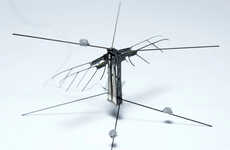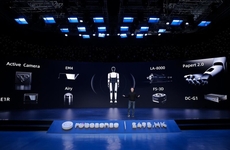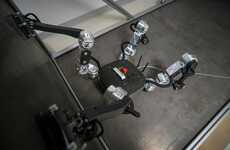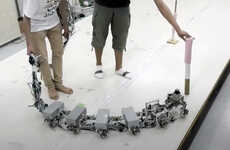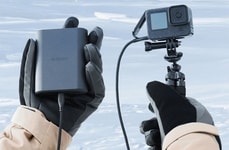
Robo-Rat Has Functioning Whiskers
References: scenta & wis-wander.weizmann.ac.il
A collaboration of nine research groups from Europe, Israel, and the US have teamed up to build a robotic rat with a unique feature: it has functioning whiskers!
Traditionally, sensors used for robotics are usually non-contact based, such as vision sensors, laser range finders, and ultra-sonic transducers. However, all of these technologies have their limitations, especially in dark or harsh environments.
Scientists participating in the project took a cue from nature and developed a whiskered robo-rat that learns about its surrounding through its sense of touch.
The project has enabled the scientists to begin to understand why a real rat's sense of touch is so efficient, which could enable this technology to be used in more sophisticated applications in the future. According to Prof. Ehud Ahissar of the Weizmann Institute of Science's Neurobiology Department, "implementing this biological knowledge will hopefully allow robotics researchers to build machines that are more efficient, which can be used in rescue missions, as well as search missions under conditions of restricted visibility", perhaps even planetary exploration.
Traditionally, sensors used for robotics are usually non-contact based, such as vision sensors, laser range finders, and ultra-sonic transducers. However, all of these technologies have their limitations, especially in dark or harsh environments.
Scientists participating in the project took a cue from nature and developed a whiskered robo-rat that learns about its surrounding through its sense of touch.
The project has enabled the scientists to begin to understand why a real rat's sense of touch is so efficient, which could enable this technology to be used in more sophisticated applications in the future. According to Prof. Ehud Ahissar of the Weizmann Institute of Science's Neurobiology Department, "implementing this biological knowledge will hopefully allow robotics researchers to build machines that are more efficient, which can be used in rescue missions, as well as search missions under conditions of restricted visibility", perhaps even planetary exploration.
Trend Themes
1. Whiskered Robotics - Robotic technologies that incorporate touch through whisker-like sensors for more efficient and accurate data acquisition in darker or harsh environments.
2. Nature-inspired Robotics - Robotics researchers taking cues from nature to develop more advanced robotics technologies that can learn about their surroundings through novel sense mechanisms.
3. Efficient Robotics - Developing more efficient and sophisticated robotics technologies that can be used in rescue and search missions in restricted visibility, as well as planetary exploration.
Industry Implications
1. Robotic Manufacturing - Incorporating whisker-like sensors to improve precision and efficiency in manufacturing processes.
2. Search and Rescue - Using more advanced and efficient robotics technologies with touch sensing capabilities to enhance search and rescue missions, especially in hazardous conditions.
3. Planetary Exploration - Developing next-generation robotics technologies with nature-inspired touch sensing mechanisms for the purpose of conducting more efficient planetary exploration missions.
1.2
Score
Popularity
Activity
Freshness


